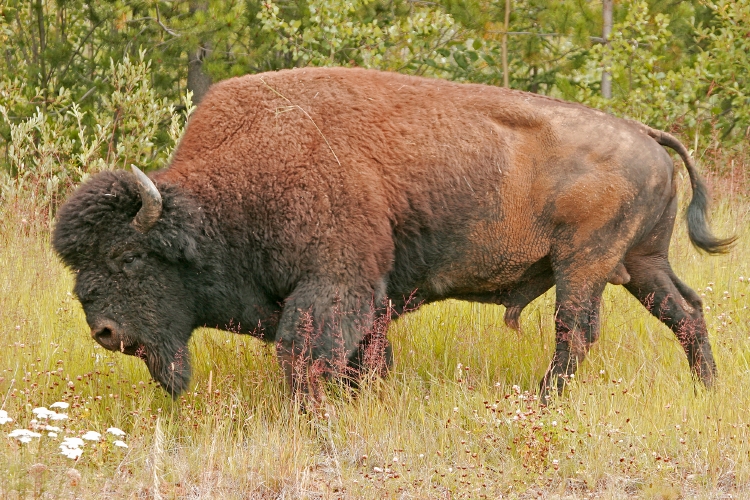Wood bison
Credit: Wikipedia user Outriggr (Creative Commons)
With one fell swoop, Manitoba made great gains in protecting its only free-roaming wood bison herd while simultaneously ensuring that the traditional land-use rights of nearby indigenous communities would be preserved.
Chitek Lake Provincial Park, the province’s 88th, stands alone in Manitoban history as being the first such park to be officially classified for traditional indigenous land use. This means that affected Aboriginal communities that rely on the area for hunting, fishing, and trapping—vital sources of food, sustenance, and the preservation of traditional values—including Skownan First Nation, may continue to uphold these values and land uses for generations to come.
In addition to cultural heritage, the new provincial park resides in an area rich with ecological values. The 250,000-acre expanse of pristine boreal forest wilderness nestled between Lake Winnipeg and Lake Winnipegosis—two of Manitoba’s Great Lakes—not only plays home to the province’s only free-ranging herd of wood bison, it’s also a critical area for some of Canada’s most iconic yet rapidly declining songbirds.
The region lies within the heart of the known ranges for the Canada Warbler, Olive-sided Flycatcher, and Rusty Blackbird—all of which have declined by more than half over the past several decades. New parks such as this will go a long way toward ensuring much of their summer breeding habitat remains healthy and free of industrial practices for decades to come.
Between the preservation of traditional practices, sanctuary for the embattled wood bison, and sustaining intact habitat for some of North America’s most beloved songbirds, there are a lot of reasons to cheer this great step forward for Manitoba.


